By the summer of 1945, the Japanese navy and air force were destroyed. Its army had been decimated. The Allied naval blockade of Japan and intensive bombing of Japanese cities had left the country and its economy devastated, it’s people suffering.
The Aftermath of WWII and Hiroo Onoda’s Mission
After the Hiroshima atomic bomb attack, factions of Japan’s supreme war council favored unconditional surrender but the majority resisted. When the second atomic bomb was dropped on Nagasaki, the Japanese Emperor Hirohito told the supreme war council to negotiate the unconditional surrender. To the Japanese his word was that of a god.On Sunday, September 2, 1945, more than 250 Allied warships lay at anchor in Tokyo Bay. Just after 9 a.m. on board the USS Missouri General Douglas MacArthur presided over the official surrender ceremony as Japanese Foreign Minister Mamoru Shigemitsu signed on behalf of the Japanese government. General Yoshijiro Umezu then signed for the Japanese armed forces. His aides wept as he made his signature. The most devastating war in human history was over.
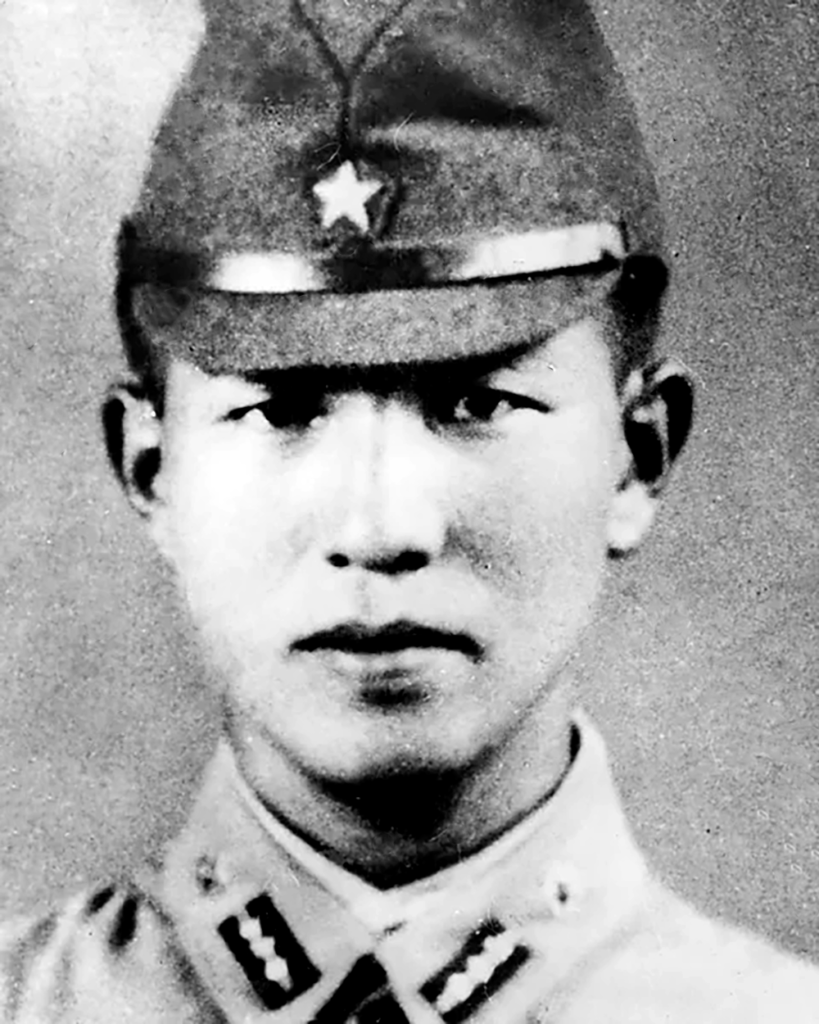
Japanese Holdouts and Hiroo Onoda’s Deployment
Within days defeated Japanese forces surrendered their arm and returned to their homeland. But not all of them!
Japanese holdouts or stragglers either adamantly doubted the truth of the formal surrender due to strong dogmatic or militaristic principles, or simply were not aware of it because communications had been cut off during the United States island-hopping campaign.
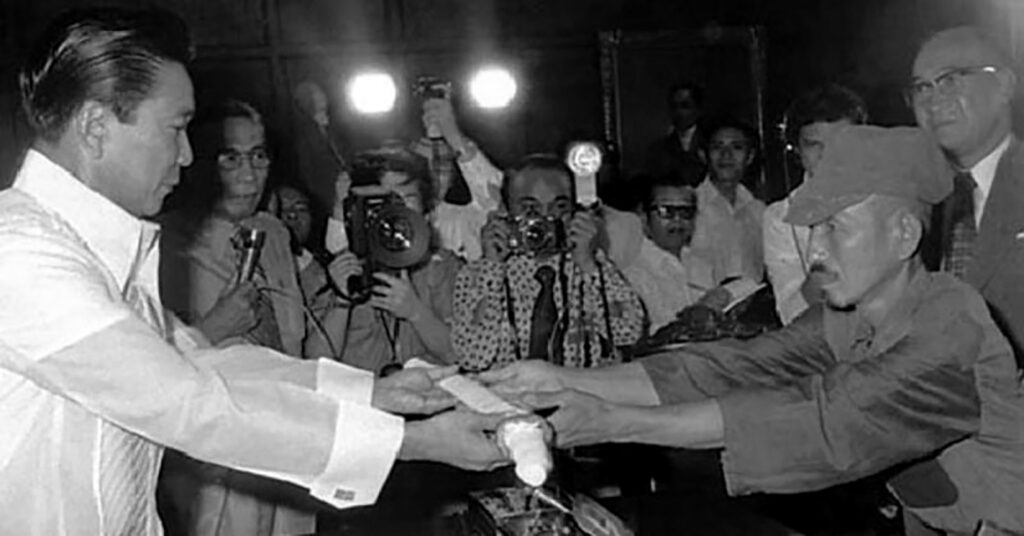
For years after the war was over they continued to fight the enemy forces, and later local police. Some Japanese holdouts volunteered during the First Indochina War and Indonesian War of Independence (our Vietnam War) to free Asian colonies from Western control despite these having once been colonial ambitions of Imperial Japan before and during World War II.
Hiroo Onoda’s Mission on Lubang Island
Among the holdouts was intelligence officer Lt. Hiroo Onada. In 1944, Lt. Onoda was sent by the Japanese Army to the remote Philippine island of Lubang. His mission was to conduct guerrilla warfare against Allied forces. Once on the island, Onoda was supposed to blow up the pier at the harbor and destroy the Lubang airfield.
Unfortunately, the garrison commanders decided not to help Onoda on his mission and soon the island was overrun by the Allies. Most of the Japanese troops on the island withdrew or surrendered. A small number of Japanese, convinced the surrender by the Emperor of Japan was a hoax, retreated into the inner regions of the island and split into small groups to avoid capture. As these groups dwindled in size after several attacks, the remaining soldiers split into cells of 3 and 4 people. There were four people in Onoda’s cell: Corporal Shoichi Shimada (age 30), Private Kinshichi Kozuka (age 24), Private Yuichi Akatsu (age 22), and Lt. Hiroo Onoda (now age 23).
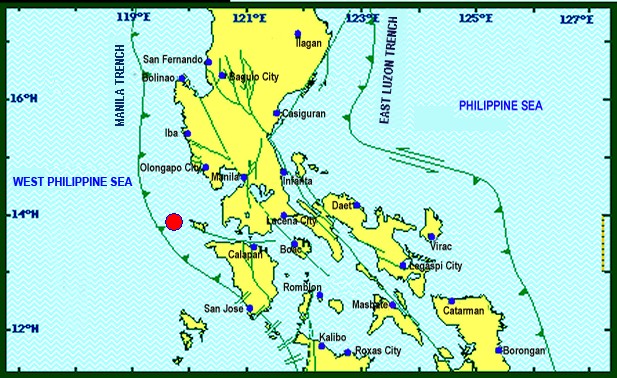
Leaflets and Attempts to End Hiroo Onoda’s Holdout
Allied forces made a serious effort to get the holdouts to believe the war was over. Leaflets were dropped over remote jungles and mountains and rescue parties led by former Japanese officers searched the isolated corners of the island. The efforts paid off as small groups trickled from hiding and surrender. Only a few disbelievers remained hidden.
Onoda first saw a leaflet that claimed the war was over and how to surrender in October 1945. When another cell had killed a cow, they found a leaflet left behind by the islanders which read: “The war ended on August 15. Come down from the mountains!” But as they sat in the mountain jungle, the leaflet just didn’t seem to make sense, for another cell had just been fired upon a few days before. If the war were over, why would they still be under attack? No, they decided, the leaflet must be a clever ruse by the Allied propagandists.
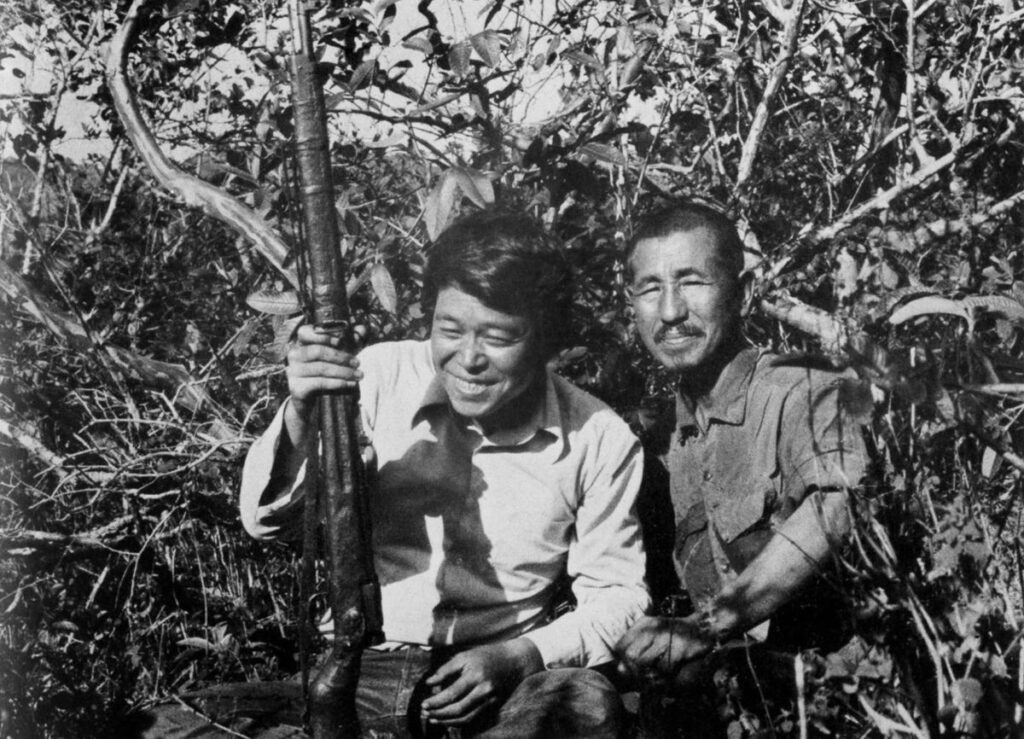
Again, the outside world tried to contact the survivors living in the island’s the isolated wilderness by dropping leaflets out of a U.S. Army Air Force Boeing B-17 near the end of 1945.
Printed on these leaflets was the surrender order from General Yamashita of the Fourteenth Area Army. Having already hidden on the island for a year and with the only proof of the end of the war being this leaflet, Onoda and the others scrutinized every letter and every word on this piece of paper concluding it must be an Allied hoax.
Leaflet after leaflet was dropped. Newspapers were left. Photographs and letters from relatives were dropped. Friends and relatives spoke out over loudspeakers. There was always something suspicious, so they never believed that the war had really ended. Year after year, hiding in caves, the four men huddled together in rain, searched for food, and sometimes attacked villagers. Isolated from the rest of the world, everyone appeared to be the enemy.
Losses and Persistence of Hiroo Onoda’s Group
Tired of near starvation and constantly hiding, Akatsu got away from the others and after six months on his own in the jungle he surrendered in 1949.
In June 1953, Shimada was wounded during a skirmish. Though his leg wound slowly got better (without any medicines or bandages), he became gloomy. On May 7, 1954, Shimada was killed in a skirmish on the beach at Gontin.
For nearly 20 years after Shimad’s death, Kozuka and Onoda continued to live in the jungle ready for the time when they would again be needed by the Japanese army. They believed it was their job to remain behind enemy lines, reconnoiter and gather intelligence to be able to train Japanese troops in guerrilla warfare in order to regain the Philippine islands. In October 1972, at the age of 51 and after 27 years of hiding, Kozuka was killed during a clash with a Filipino patrol. Though Onoda had been officially declared dead in December 1959 Kozuka’s body proved the likelihood that Onoda was still living.
Search parties were sent out to find Onoda, but none succeeded. His own father went to the island trying to coax Onoda to surrender. All alone Onoda continued to hide. Remembering the division commander’s order, he could not kill himself (Hari-kari) yet he no longer had a single soldier to command.
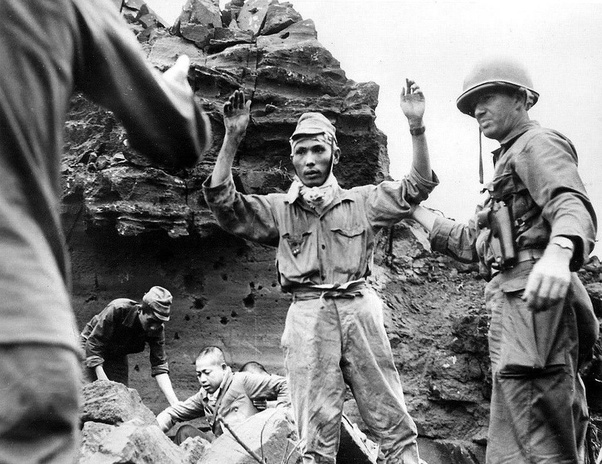
The Search and Final Surrender of Hiroo Onoda
In 1974, a college dropout named Norio Suzuki decided to travel to the Philippines, Malaysia, Singapore, Burma, Nepal, and perhaps a few other countries on his way. He told his friends that he was going to search for Lt. Onoda, a panda, and the Abominable Snowman. Where so many others had failed, Suzuki succeeded. He found Lt. Onoda and tried to convince him that the war was over. Onoda explained that he would only surrender if his commander ordered him to do so.

Suzuki traveled back to Japan and found Onoda’s former commander, Major Taniguchi, who had become a bookseller. On March 9, 1974, Suzuki and Taniguchi met Onoda at a pre-appointed place and Major Taniguchi read the orders that stated all combat activity was to be ceased. Onoda was shocked and, at first, disbelieving. It took some time for the news to sink in.
Hiroo Onoda’s Legacy
In his book, “No Surrender: My Thirty-year War” Onoda wrote his feelings the moment he realized it was actually over:”We really lost the war! How could they have been so sloppy? Suddenly everything went black. A storm raged inside me. I felt like a fool for having been so tense and cautious on the way here. Worse than that, what had I been doing for all these years?
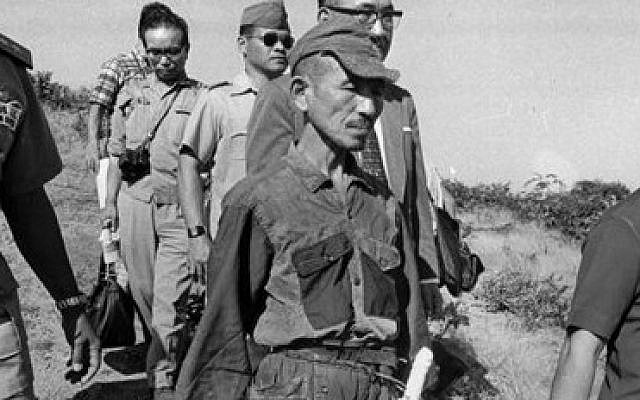
Gradually the storm subsided, and for the first time I really understood: my thirty years as a guerrilla fighter for the Japanese army were abruptly finished. This was the end.I pulled back the bolt on my rifle and unloaded the bullets.
I eased off the pack that I always carried with me and laid the gun on top of it. Would I really have no more use for this rifle that I had polished and cared for like a baby all these years? Or Kozuka’s rifle, which I had hidden in a crevice in the rocks? Had the war really ended thirty years ago? If it had, what had Shimada and Kozuka died for? If what was happening was true, wouldn’t it have been better if I had died with them?” Onoda wept uncontrollably as he agreed to lay down his perfectly serviceable rifle.
Onoda Was Hailed a Hero
During the 30 years that Onoda had remain hidden on Lubang island, he and his men had killed at least 30 Filipinos and had wounded approximately 100 others. After formally surrendering to Philippine President Ferdinand Marcos, Marcos pardoned Onoda for his crimes while in hiding.
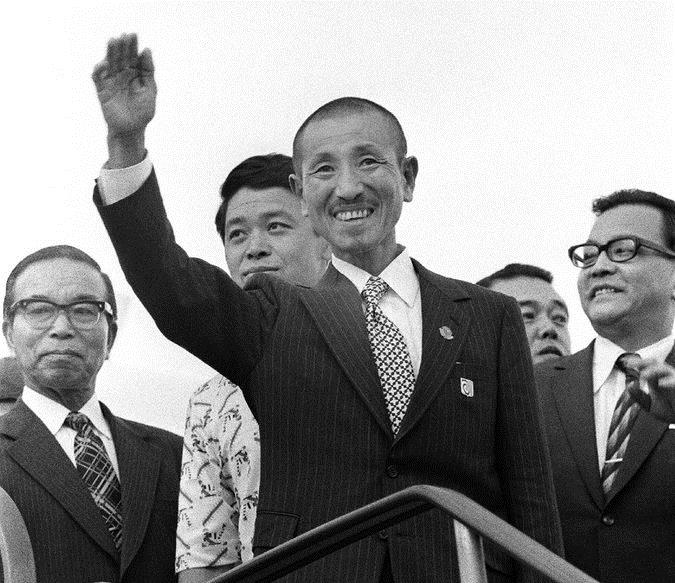
When Onoda reached Japan, he was hailed a hero. But his nearly 30 year of living in isolation, hiding from those he believed would harm him, living off the land and watching his men die or desert him, he saw Japan much differently than when he had left it in 1944. He bought a ranch and moved to Brazil but in 1984 he and his new wife moved back to Japan and founded a nature camp for kids.
Onoda died in Tokyo Japan on January 16, 2014 at the age of 91.
Read About Other Military Myths and Legends
If you enjoyed learning about Japanese Soldier Surrenders 30 Years After End of WWII, we invite you to read about other military myths and legends on our blog. You will also find military book reviews, veterans’ service reflections, famous military units and more on the TogetherWeServed.com blog. If you are a veteran, find your military buddies, view historic boot camp photos, build a printable military service plaque, and more on TogetherWeServed.com today.
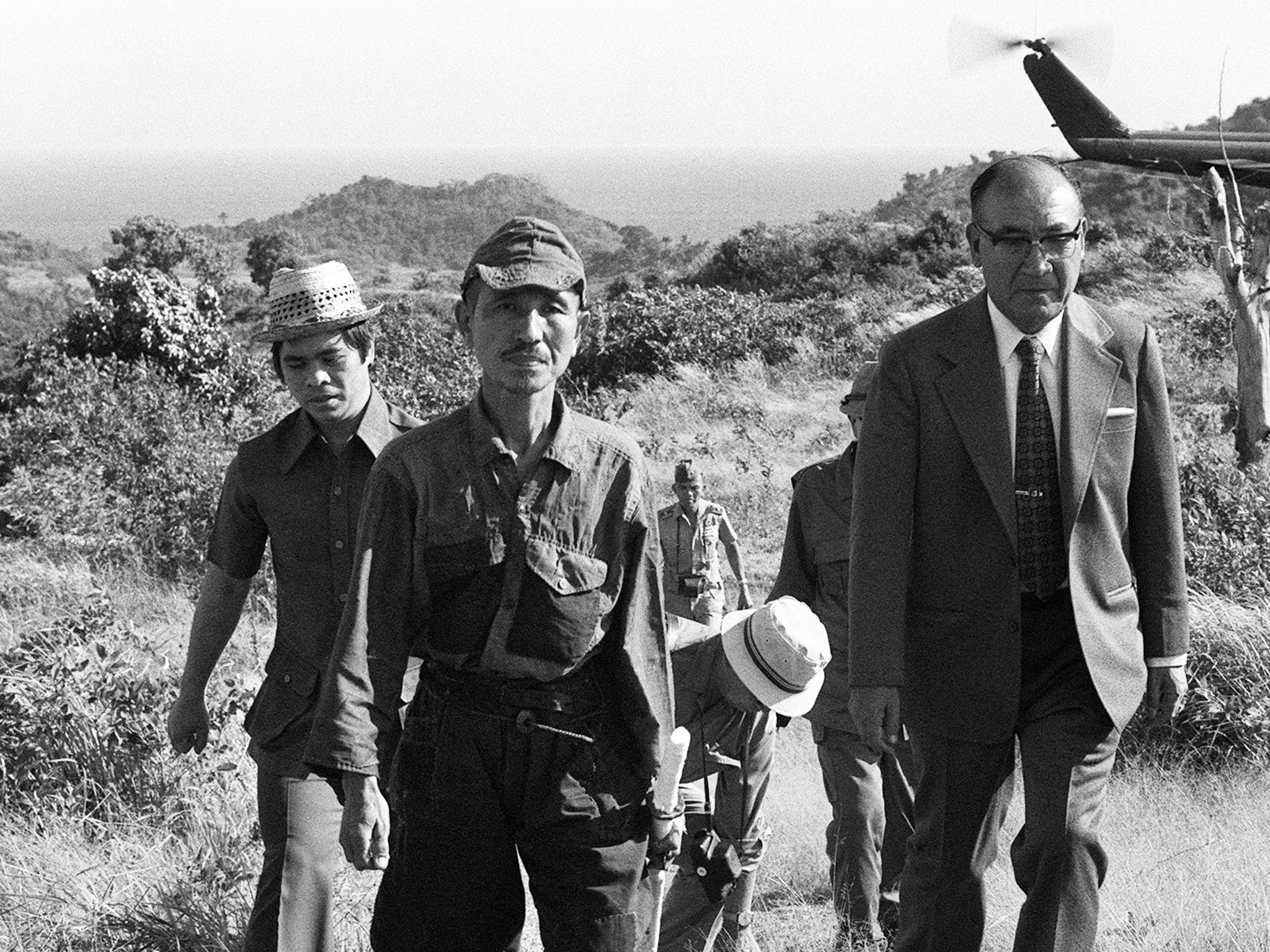
This story brought tears to my eyes as I was born during the latter part of the WWII, and I wondered if I could follow similar orders as Onota followed for that many yrs. and never doubt the integrity of my commanding officer or the value of those orders as they controlled my destiny for over 30 yrs. of total isolation from the ways of the world?? Little do we know about the ways of the warrior who did not abandon his post for any reason to so long.
Still, I am a veteran of the Vietnam era and have suffered from my injuries while serving as a Weapons Load Crew Chief of the 526th FIS at Ramstein, Germany, never knowing if I had any claim to Veterans Benefit until the very end of the last Century, when I moved to the Panhandle of Florida and an old veteran told me that I was in fact entitled to disability claims for my military service in the USAF from 1964 to 1968. I in fact DID apply for some degree of entitlement for disability 7 times during the 1970’s and was turned down 7 times. I felt that even though I had injured myself during a pre-load inspection of one of the F-102 aircraft in our squadron, when I slipped on an icy rung of the cockpit access ladder and fell about 7′ down to the tarmac surface of the parking ramp and unknowingly at that point had ruptured my appendix and cracked a few ribs in that fall.
I finally found that I could qualify for medical benefits through the VA because of my financial situation of extremely low income while getting my business started to a point where I could have a dependable income to afford medical insurance on my own. One thing led to another and finally, in a 2016 phone call to a legal firm who had handled nothing but veterans’ disability claims, I found out that I was qualified to have them represent me and my legal claims for disability were “resurrected” and I was on my way to a 5 yr. adventure in how convoluted the Veterans System was in actually filtering through the reams of paper to find enough information to validate my claims for disability. After 5 long yrs. of filling out requests, VA Disability forms, attending many requests for examinations to confirm alleged injuries contributable to my military service, I received a phone call from one of the Para-legals handling my claim informing me that I had been granted a 35% disability based on the numerously filed claims of the legal firm and the information found from digging into different areas of medical history which I never imagined were in existence at the time! To shorten the story, about a month later, the legal firm’s co-founder called me personally to tell me that they had received a confirmation of my being further awarded a full disability based on an accumulation of over 160% disability on each of the numerous individual claims filed on my behalf!! 100% was obviously the extent of disability they could allow for me but, after all those 50+ yrs. of lower back pain, joints in my knees, hips, shoulders, and the other various areas of deterioration of use had taken their toll of my body from the active outdoors activities and the 1st business I owned and operated, a full service Autobody Repair shop lasting 24 yrs., when I sold it for medical reasons, and moved to Florida where I now reside, I now could really enjoy the outdoors and not worry about costs or travel to start a new “adventure” into some wilderness somewhere where I had not yet had the time to explore. It is a sad note with which I end this short mini story with this thought: I am now legally “medically unemployable” in VA terminology and have enough income to travel anywhere my curiosity takes me, and I am much too worn out in my joints and lower back to enjoy anything in which I could take an interest for exploring that talked about lake 30 miles back in a mountain valley where the fishing is so great that one could stay for weeks at a time and never worry about what to eat for dinner! I would love to be able to do that sort of adventure again as I did when I was younger and still had enough stamina and strength to simply sling a Duluth pack on my back and hike for miles as I once did because of my limited use of parts of my body which has worn out to that point where it is a chore to walk the 50′ or so to my mailbox and back since my disability has limited my movement to a minimum. BUT I do NOT allow that to enter into my current lifestyle changes, changes I had to make to continue to be mobile and live on my own with little home care needed over and above a scheduled home cleaning which my friend does on a regular basis. I have my memories of a time long gone when I DID have that ability to travel into the backcountry and enjoy the outdoors where there was no litter, no external “noises”, simply the sounds of the wilderness, and I will always have those memories to keep me alive as long as the Good Lord allows me to reside on this rock we all call “Home”.